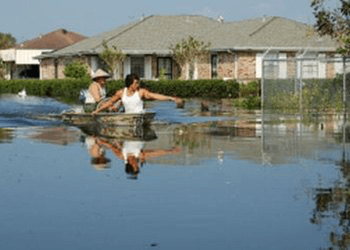Strong Social Network Sped Recovery Of Vietnamese Katrina Survivors
After Hurricane Katrina devastated New Orleans in August 2005, a tightly knit Vietnamese-American community showed a surprising and inspiring ability to pick up the pieces and rebuild.

One of the keys to successful evacuation, return and recovery after a natural disaster is a strong social network, not just locally, but nationally, says a Texas A&M University professor.
After Hurricane Katrina devastated New Orleans in August 2005, a tightly knit Vietnamese-American community, led by a charismatic Catholic priest, showed a surprising and inspiring ability to pick up the pieces and rebuild, says Verna Keith, director of the Race & Ethnic Studies Institute (RESI) and professor of sociology at Texas A&M.
Keith participated in a study measuring the post-Katrina recovery of the Vietnamese-American and African-American residents of a neighborhood in East New Orleans known as Versailles. According to Keith, in 2000, Versailles was inhabited by nearly 11,000 people, of which 50.9 percent were African-American and 43.3 percent were Asians, primarily Vietnamese.
Father Vien Nguyen, a Catholic priest and social activist whose church in Versailles was attended by much of the area’s Vietnamese-Americans, was a driving force behind the group’s astonishing recovery, according to Keith. Nguyen is prominently featured in a 2010 documentary film called “A Village Called Versailles” that chronicled this recovery.

(Texas A&M Sociology)
Keith says most of the Vietnamese Versailles residents evacuated the area by automobile before the neighborhood flooded, but between 200 to 300 residents, mostly Vietnamese and some African-Americans, took shelter at Nguyen’s church, Mary Queen of Vietnamese Church (MQVC).
Keith says that much like the rest of New Orleans, recovery in Versailles was a long and difficult process mostly because of the lack of local, state and national leadership. “Regardless, the Versailles Vietnamese returned at a more rapid rate and in greater numbers when compared to other communities in Eastern New Orleans,” she says.
By early October 2005, only one month after Katrina hit, Nguyen had returned with 300 parishioners to begin rebuilding.
Keith and her colleagues found that in the two neighborhoods nearest to MQVC, approximately 80 percent of Vietnamese-American homes were reoccupied in early May 2006 and this increased to slightly over 90 percent by late June 2006, less than a year after the hurricane.
This figure is in stark contrast to the U.S. Census Bureau’s mid-2007 estimate, almost two years after the disaster, which reported more than a third of the pre-hurricane residents of New Orleans had not returned to the city.
Keith contends that the rapid return of the Vietnamese Versailles residents was due to the bond between the MQVC church and its parishioners, a profound attachment to the area by its residents and the ability of the church to communicate with other Vietnamese institutional networks throughout the nation.
“Father Vien contacted people all around the nation and they organized to help,” Keith explains. “They had communication networks, including Vietnamese radio, which is national. They all came together and found shelter for the evacuees. Even some of the Buddhist temples in Houston were involved.”
Keith says another key to Vietnamese Versailles residents’ speedy recovery was the fact that many of them had lived in the same villages in Vietnam and were refugees from the Vietnam War. “Many of the Versailles Vietnamese came to the U.S. as refugees and their settlement in New Orleans was aided by the New Orleans Associated Catholic Charities,” Keith notes. “They had survived upheaval in Vietnam, so when they were again displaced from their homes after Katrina, they had the experience to cope.
“In addition, their strong social network facilitated their ability to reach out to local, state, and federal resources to help them rebuild their community.”
Lower Vietnamese-American return rates occurred in mixed Vietnamese/African-American neighborhoods where floodwater depths were greater and rental properties were more common, Keith found. By early November 2006, re-occupancy rates there ranged from 73 to 88 percent.
Slower rates of return for African-Americans in Versailles, as compared to the Vietnamese, were due partially to the fact that the Vietnamese were more likely to be homeowners, says Keith, and homeowners had a higher return rate than renters. Also, a disproportionate number of African-Americans lived in public housing, most of which was not reopened after the hurricane.
“It was two months after the Vietnamese returned before African-Americans began returning to Versailles,” Keith says. She found that some 40 percent of African-American residents had not returned by March 2007 because the public housing complexes they lived in had yet to be rebuilt. “The African-Americans that had returned were middle-class homeowners,” she says.
The lack of a centralized social network was also found to contribute to the African-Americans’ slow recovery as compared to the Vietnamese. “African-Americans attended many different churches both inside and outside the community,” Keith says, “so there wasn’t just this one strong social network like the Vietnamese had.”
